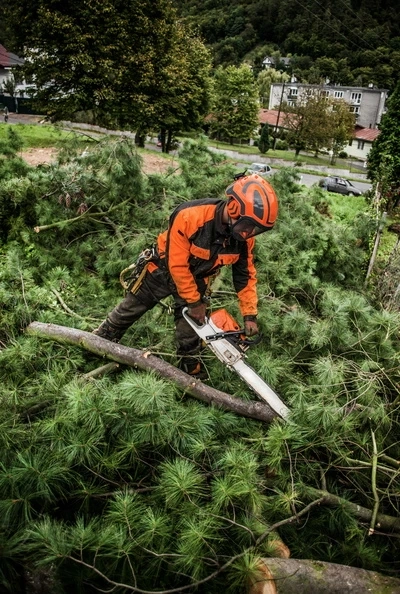Stump removal is often the final step in tree removal and can be quite challenging. Whether you’re a homeowner clearing your yard or a professional landscaper, understanding the various methods and precautions is crucial for a successful and safe stump removal.
Methods of Stump Removal
Manual Removal involves physically digging out the stump and its roots using basic tools like a shovel, mattock, and saw. This method is ideal for small stumps or those inaccessible areas. Start by digging around the stump to expose the roots, then use the mattock to sever the roots and the axe or saw to cut through them. Removing as much soil as possible makes it easier to pull out the stump. While cost-effective and requires no specialized equipment, manual removal is labor-intensive and time-consuming, especially for larger stumps.
Mechanical Removal utilizes equipment like stump grinders or backhoes and is efficient for larger stumps or multiple stumps. A stump grinder, equipped with a rotating cutting disk, chips away the wood. You position the grinder over the stump, lower it gradually, and move it back and forth to grind the stump below ground level. This method is fast and effective for large or multiple stumps but requires expensive equipment and proper training for safe operation.
Chemical Removal is suitable for those who can wait several weeks for the stump to decompose. This method involves applying chemicals that accelerate the decay process. Drill holes into the stump, fill them with the chemical solution, and over time, the chemicals break down the wood fibers, making the stump easier to remove manually or allowing it to rot away naturally. Chemical removal is low-effort and doesn’t need heavy machinery, but it’s a slow process and involves handling potentially hazardous chemicals.
Burning is another method, particularly effective in rural areas where regulations permit it. To burn a stump, drill holes in it, fill them with kerosene, let the kerosene soak in for a few days, and then ignite the stump. It’s essential to monitor the fire closely and have safety measures in place to prevent uncontrolled burning. This method can efficiently dispose of the stump without physical labor but carries fire hazards and may be restricted by local regulations.
Safety Precautions for Stump Removal
Safety during stump removal is paramount. Personal protective equipment (PPE) is essential: always wear gloves, safety goggles, steel-toed boots, and hearing protection when using loud equipment.
For equipment safety, ensure that manual tools are sharp and in good condition to reduce effort and prevent accidents. Only operate mechanical tools if you are trained and familiar with the equipment. Follow the manufacturer’s guidelines, and make sure all safety guards are in place.
Environmental safety is also crucial. When using chemicals, follow the directions carefully and avoid contact with skin or eyes. Store chemicals safely, away from children and pets. For fire safety, keep a water source or fire extinguisher nearby when burning stumps, and never leave the fire unattended.
Site safety includes clearing the area around the stump of any debris that could cause tripping or obstruct your work. Ensure there are no underground utilities like gas lines or cables near the stump; call the local utility company to mark the area if unsure.
Techniques for Different Scenarios
Small Stumps: For small stumps, manual removal is often sufficient. Dig around the stump to expose roots and use a mattock and saw to cut through them. Alternatively, small stumps can be treated with chemicals to decompose over time.
Large Stumps: Large stumps usually require mechanical removal. A stump grinder can efficiently reduce the stump to below ground level. If the stump is exceptionally large or if using a grinder is not an option, hiring professional services might be necessary.
Stumps in Difficult Locations: Stumps located near buildings, fences, or other structures need careful handling to avoid damage. Manual or chemical methods are preferred to minimize risks. Mechanical removal should be done with precision to avoid impacting nearby structures.
Multiple Stumps: When dealing with multiple stumps, efficiency is key. Mechanical removal using a grinder or backhoe is usually the best approach. Plan the removal sequence to minimize the movement of heavy equipment and avoid excessive soil disruption.
Rotting Stumps: Partially rotted stumps can be easier to remove manually or with minimal mechanical assistance. However, they may also harbor pests or fungi. Chemical treatment to accelerate the rotting process or thorough physical removal can address these issues.
Stump removal, while often challenging, can be managed effectively by choosing the right method and following safety protocols. Whether you opt for manual, mechanical, chemical, or burning methods, understanding the specific requirements and precautions for each scenario ensures a safer and more efficient removal process. By considering the size and location of the stump, as well as any potential hazards, you can select the most appropriate technique for a successful outcome.


